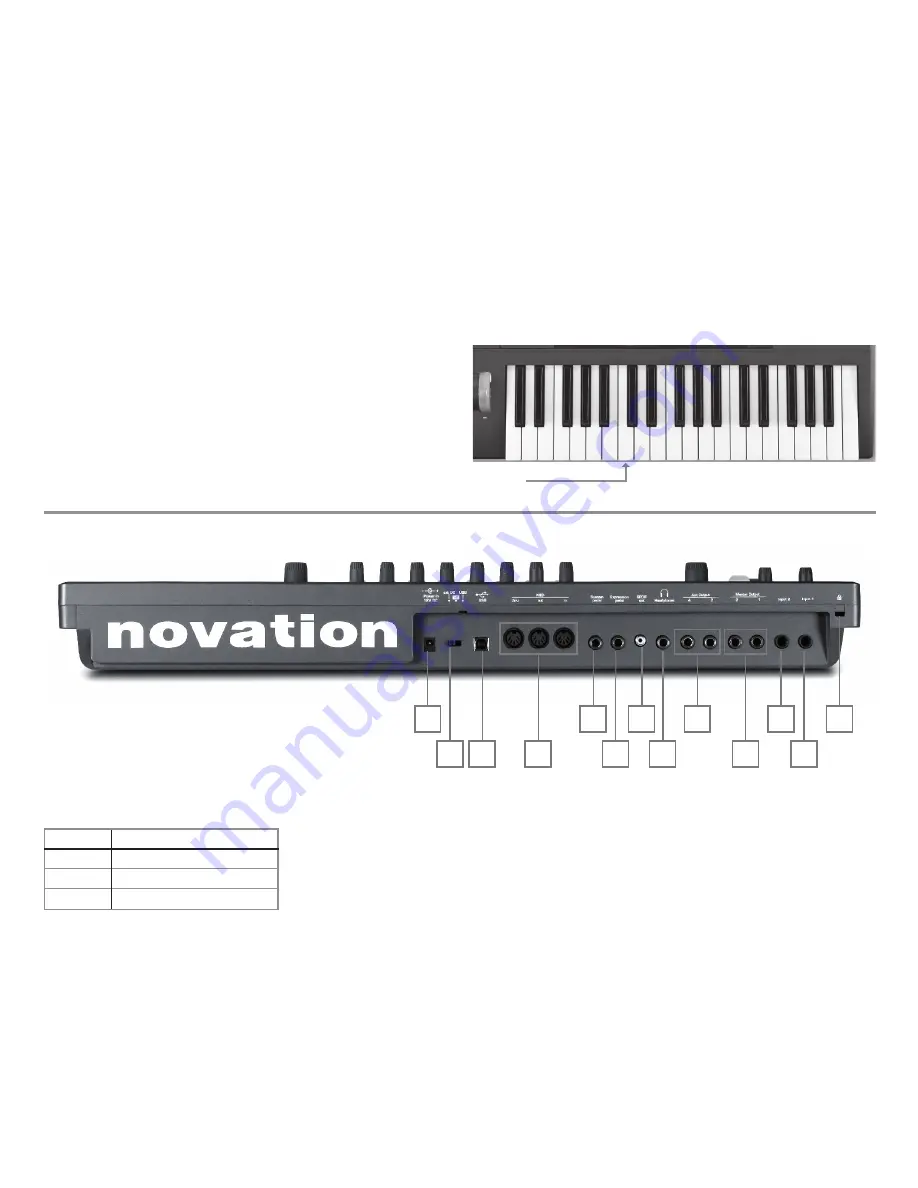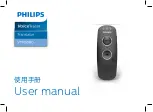
5
LATCH
button applies the arpeggiator effect to the last note(s) played continuously,
until a subsequent key is pressed.
LATCH
can be pre-selected so that it is effective
as soon as the Arpeggiator is enabled.
[21]
CHORD
controls: the UltraNova lets you play a chord with a single keyboard note.
The
ON
button enables the Chorder function; the
EDIT
button opens the Chord
Edit Menu, from where chord deinition and transposition can be performed.
[22] Animate controls: the
TWEAK
and
TOUCH
buttons enable alternative modes of
the eight rotary encoders, allowing them to be used dynamically in performance.
TWEAK
lets you set up a custom “control panel” of sound parameters for each
patch that you use, so that you can readily access those most needed;
TOUCH
activates the encoders’ touch sensitivity, letting you introduce pre-programmed
alterations to your sound just by touching a knob.
MODE/SOUND controls
[23]
Patch
controls: the
PATCH
BROWSE
button, together with the
COMPARE
and
WRITE
buttons, lets you audition the UltraNova’s stored patches, compare them
with the current synth settings (particularly useful when modifying sounds) and
overwrite the patch with the current settings if wished.
[24]
PATCH SELECT/SPEED DIA
L rotary control: used in patch selection. Note that
this control has a push as well as a rotary function.
[25]
SYNTH BUTTON
: this puts the UltraNova into Synth mode, enabling the internal
sound generation and sound card functions.
[26]
AUTOMAP BUTTON
: Automap mode is the alternative to Synth mode, and
effectively disables the synthesizer control functions, allowing the UltraNova to act
as an Automap controller for plug-ins and DAWs. Use of this function requires
Novation’s Automap software package. Note that the synthesiser will still output
audio when triggered by MIDI from your DAW software.
GLOBAL controls
[27]
Dynamic Mic Input
: an XLR socket for the connection of the supplied gooseneck
microphone, or alternative dynamic microphone (i.e. a mic not requiring phantom
power to operate). The mic signal can be routed to the vocoder, mixed internally with
the synth and routed to the audio outputs. Additionally the mic input may be routed
directly to the DAW using the internal sound card. This input is overridden when a
jack plug is plugged in to Input 1 [11] on the rear panel.
[28]
MONITOR
: this rotary control adjusts the balance between audio from the Host
(PC or Mac, if connected) and the combined audio from the synth and audio inputs.
[29]
MASTER VOLUME
: the level control for the main audio outputs (and also for the
headphone output if the default setting for headphone level control in the Audio
Menu is retained.)
[30]
AUDIO BUTTON
: opens the Audio Menu (seven pages), allowing audio routing
and level adjustments to be made.
[31]
GLOBAL BUTTON
: opens the Global Menu (seven pages).
[32]
and
–
buttons: these two buttons transpose the keyboard up or down
one octave each time they are pressed, to a maximum of ive octaves down or four
octaves up. When both LEDs are off (the default state), the lowest note on the
keyboard is one octave
Middle C
1
2
3
4
5
6
7
8
9
10
11
12
13
Rear view – connections
{1}
DC power connector
: standard 2.2 mm socket for connecting the external 12 V
DC PSU (supplied). See page 3.
{2}
On/off switch
: 3-position switch:
POSITION
ACTION
Left
Enables external 12 V DC input [1]
Centre
Off
Right
Enables power via USB port [3]
{3}
USB port
: Type B USB 1.1 (USB 2.0-compatible) socket for connection to PC or
Mac
{4}
MIDI connectors
: standard MIDI In/Out/Thru sockets (5-pin DINs)
{5}
Sustain pedal socket
: 2-pole (mono) ¼” jack socket for connection of a sustain
pedal. Both NO and NC pedal types are compatible; if the pedal is connected
when the UltraNova is powered on, the type will be automatically sensed during
boot-up (provided your foot is not on the pedal!).
{6}
Expression pedal socket
: 3-pole (stereo) ¼” jack socket for connection of an
expression pedal. A full list of supported pedals can be found on the Novation
answerbase at www.novationmusic.com/answerbase
{7}
SPDIF output
: phono socket (RCA jack) carrying digital version of main outputs
1 & 2 in S-PDIF format.
{8}
Headphone socket
: 3-pole ¼” jack socket for stereo headphones. Phones volume
and mix can be adjusted independently from the Audio menu.
{9}
Aux Outputs 3 & 4
: 2 x ¼” jack sockets. Outputs are unbalanced, at +6 dBu
maximum level.
{10}
Main outputs 1 & 2
: 2 x ¼” jack sockets carrying main stereo output. Outputs are
unbalanced, at +6 dBu maximum level.
{11}
Input 2
: ¼” jack socket for external mic or line level audio inputs. The signal at Input
2 may be mixed internally with Input 1 using the Audio Menu. Inputs are balanced,
and can accept a maximum input level of +2 dBu.
{12}
Input 1
: ¼” jack socket for external mic or line level audio inputs. This input
overrides an XLR connector plugged into the Dynamic Mic Input [27] on the top
panel. Inputs are balanced, and can accept a maximum input level of +2 dBu.
{13}
Kensington Lock Port
: to secure your synthesizer.







































